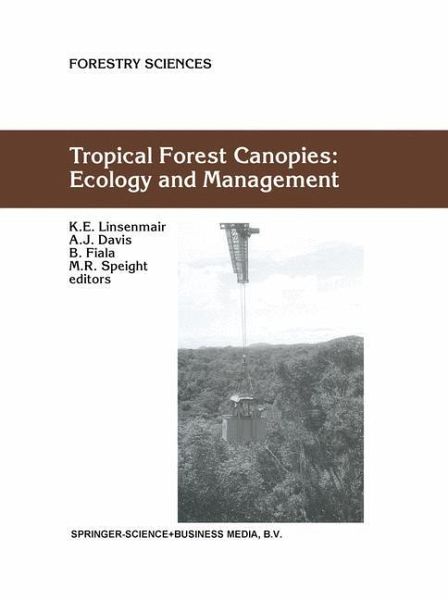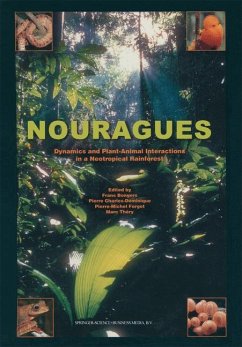
Tropical Forest Canopies: Ecology and Management
Proceedings of ESF Conference, Oxford University, 12-16 December 1998
Herausgegeben: Linsenmair, K.E.; Davis, Andrew; Fiala, B.; Speight, M.R.

PAYBACK Punkte
77 °P sammeln!
Almost half of all life on earth may exist in the world's forest canopies. They may also play a vital role in maintaining the planet's climate, yet they remain largely unexplored owing to difficulties of access. They are renowned for their great diversity and role in forest functioning, yet there are still great gaps in the understanding of this `last biological frontier'. This seminal book shows how canopy science is now in a position to answer many of the outstanding questions, among which are some of the most pressing environmental issues society is presently facing. It represents a major s...
Almost half of all life on earth may exist in the world's forest canopies. They may also play a vital role in maintaining the planet's climate, yet they remain largely unexplored owing to difficulties of access. They are renowned for their great diversity and role in forest functioning, yet there are still great gaps in the understanding of this `last biological frontier'. This seminal book shows how canopy science is now in a position to answer many of the outstanding questions, among which are some of the most pressing environmental issues society is presently facing. It represents a major summary of the current understanding of canopy ecology, and maps a path forward into a greater understanding of tropical forest ecology and management at a time when the very future of this ecosystem is threatened by humanity's actions.












